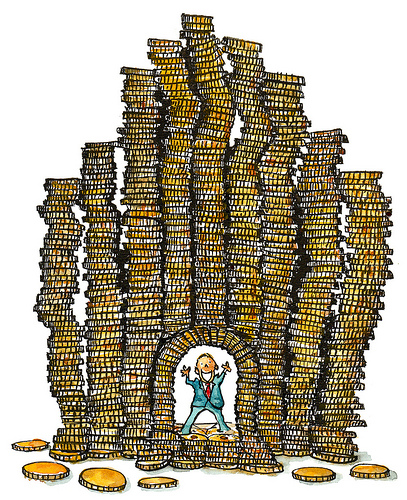
The Right Royalties Rates
 Last week we had a look at the dangers of signing a publishing contract where royalties are based on the Net.
Last week we had a look at the dangers of signing a publishing contract where royalties are based on the Net.
This has a direct influence on the amount of money the author will receive from the sales of his books, but so does the agreed upon percentage of royalties the author is contractually entitled to.
A self-published author pricing his books in Amazon defined bracket can earn as much as 70% of the cover price of the book. Yet, this also means he will be alone in providing art cover, editing, formatting, distributing and marketing. Or he might pay separate professionals or a publishing platform to perform all or some of these tasks. This will cost either an upfront amount or a portion of the royalties resulting from selling the book on Amazon.
In addition, the cost of a single mistake in the book might cost dearly, as reported by Mike Shatzkin “a single complaint from a reader to Amazon about a typo in one’s book can result in the ebook being taken down for a required correction. He [Bob Mayer] has learned, as others have, that maximizing revenue requires changing and re-changing your prices, which is more work. […] Another view of this aggressiveness to satisfy customers was offered to me by a Big Six executive a few months ago when he related the story of a book published by his house that had been taken down. There the “culprit” was vernacular language that was interpreted by a reader as poorly copy-edited grammar. There was nothing wrong with the ebook, but one reader thinking there was resulted in a takedown that cost everybody sales for several days until the ebook could be put back up!”
So, provided the publisher or epublisher does his job properly, he deserves to be paid fairly for his services. There comes the 1 million dollar question: what is a fair payment?
Several elements have to be taken into account.
- As opposed to a self-published writer, a publisher is edging his bet. Some of the books he publishes will, hopefully, yield a lot of revenues whereas other will not sell enough to cover the costs. In other words, a bestselling book benefits not only his author but also authors from other books who benefit from the services of the publisher for free.
- An important part of the publisher is to distribute the book, to “put it on the shelves”. Yet, these shelves are rarely available for free, so the cover price in the shop is between 25 to 30% more than the price the retailer paid the publisher for the book.
- A publisher will provide Advance Review Copies for free and other promotional material that the self-publisher will have to either produce alone or by copies of his own book from Amazon to send it to potential reviewers.
- The publisher shoulders all the production costs.
- Ideally, the publisher has a lot experience and contacts in the publishing business and the author is the prime beneficiary from that experience and contacts.
None of this of course gives a straight answer to what the right royalties’ percentage for authors should be, but at least it gives some element to take into account when evaluating what is fair.